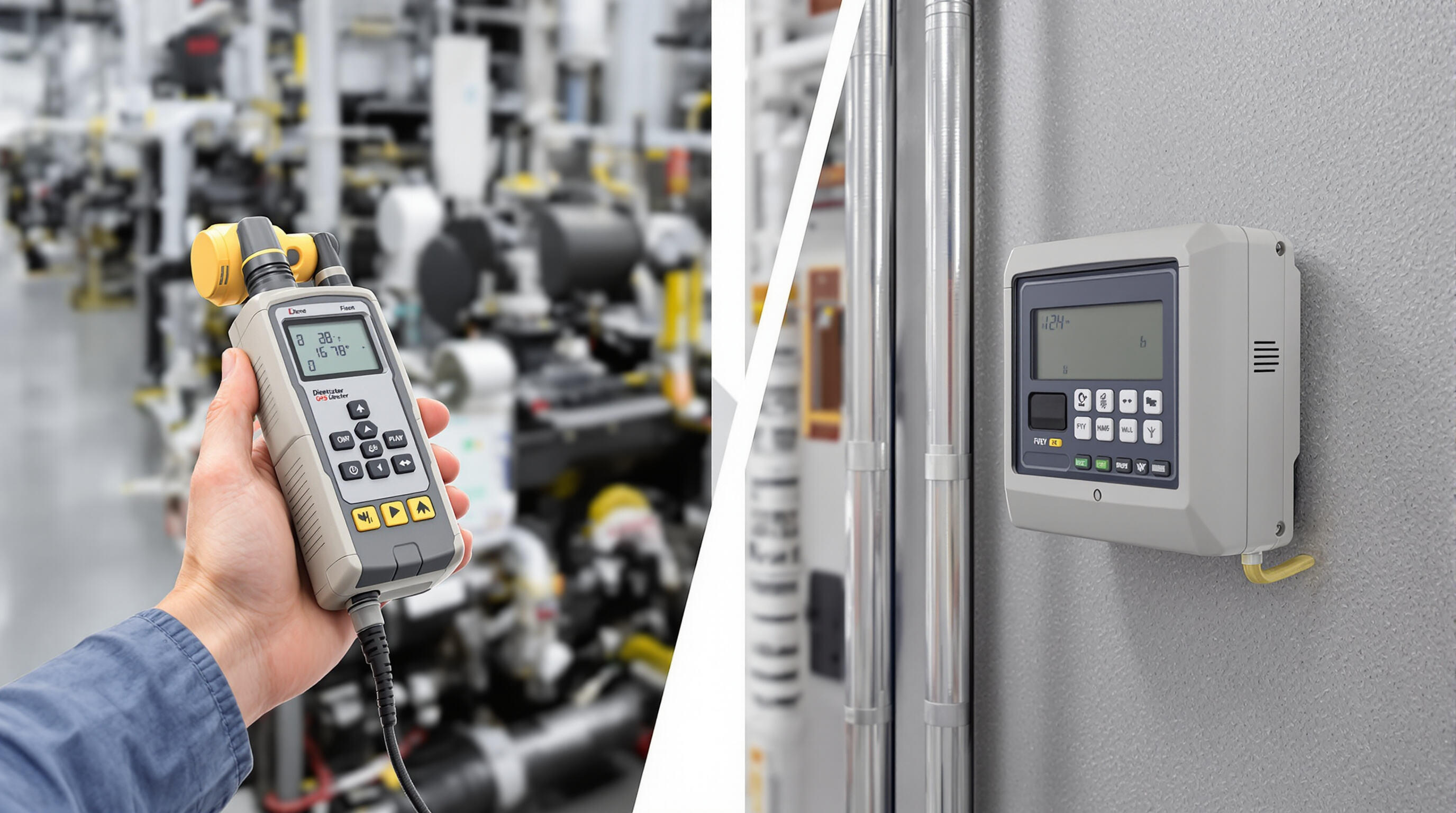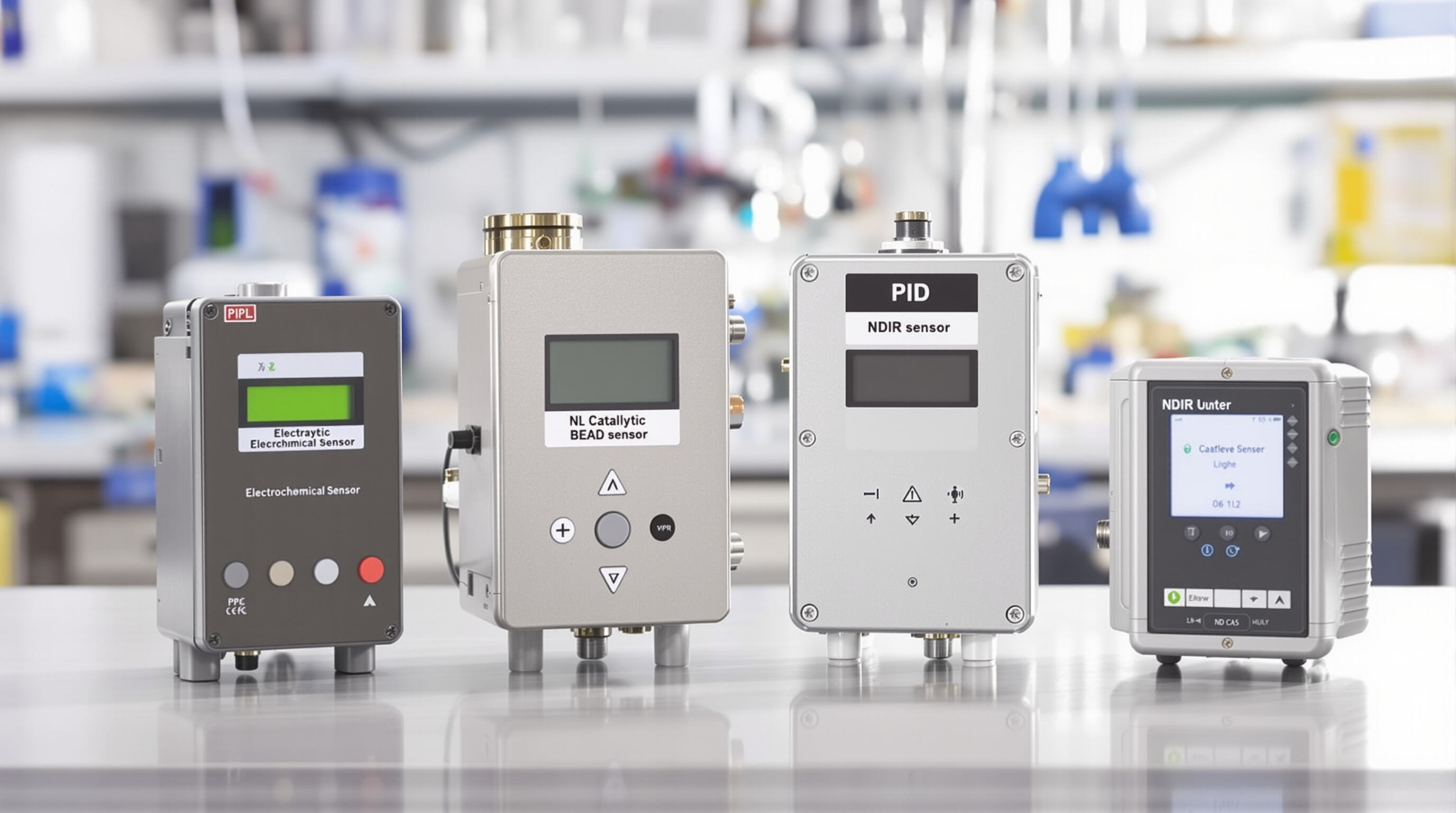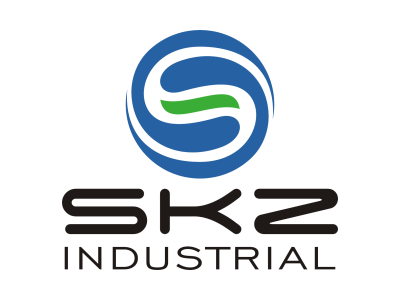Portable vs Fixed Gas Detectors: Selecting the Right Deployment Type

Key differences between portable and fixed gas detectors
While portable and fixed gas detectors share basic detection functions, they actually work quite differently in practice. The portable ones focus on being easy to carry around since they're small enough to fit in a pocket and run off batteries instead of needing power cords. Workers can move them from place to place quickly when checking different areas for safety issues. These handheld models really shine during short term inspections, when entering tight spaces for checks, or during routine maintenance jobs where dangerous conditions might come and go throughout the day.
Fixed systems provide 24/7 area monitoring through hardwired installations at strategic locations like storage tanks or processing units. As noted in industry research from leading safety organizations, fixed detectors often integrate with automated safety responses — triggering ventilation systems or process shutdowns when thresholds are exceeded.
| Feature | Portable Gas Detectors | Fixed Gas Detectors |
|---|---|---|
| Deployment | Mobile personnel/spot checks | Permanent area monitoring |
| Power Source | Rechargeable batteries | Hardwired electrical systems |
| Alarm Response | Local audible/visual alerts | Centralized control panel links |
| Typical Use Cases | Confined space entry, audits | Leak detection in pipelines |
Leading manufacturers now offer hybrid solutions, with portable devices syncing data to fixed systems via wireless protocols like LoRaWAN, creating layered protection networks without invasive retrofitting. This convergence addresses historical gaps in coverage while maintaining OSHA/NIOSH compliance across dynamic worksites.
Matching Sensor Technologies to Target Gases for Optimal Detection

How electrochemical sensors detect toxic gases like CO and H2S
Electrochemical sensors can spot dangerous gases such as carbon monoxide (CO) and hydrogen sulfide (H₂S) pretty accurately thanks to some specific chemical reactions going on inside them. When target gases pass through those tiny holes in the membrane material, they end up mixing with an electrolyte solution. This causes little electrical changes at the working electrode area where oxidation and reduction happen simultaneously. What we get from all this chemistry is actually a current that tells us how much gas there really is in the air around us. Most models work well between 0 to 500 parts per million for hydrogen sulfide and go up to 1,000 ppm for carbon monoxide detection. Plus, since they don't need much electricity at all (less than 10 milliwatts), these kinds of sensors fit nicely into handheld equipment without draining batteries too fast. They respond quickly too, usually within about 30 seconds, and their readings stay pretty close to reality most of the time (+/- 5% error). For people who have to check air quality in tight areas like tunnels or storage tanks, having reliable sensor technology literally means the difference between safety and serious health risks.
Catalytic bead sensors for flammable gas detection in explosive environments
Cat bead sensors detect flammable gases including methane and propane in dangerous industrial zones. These devices work by having platinum wires wrapped around catalyst beads that react when they come into contact with combustible materials, generating heat through oxidation. The heat then affects the electrical resistance within what's called a Wheatstone bridge setup, turning gas concentrations into measurable digital outputs. Most models operate across the full 0 to 100% Lower Explosive Limit range and typically respond within just 15 seconds flat, making them indispensable tools at oil refineries everywhere. Built tough enough to withstand harsh conditions, these sensors comply with strict safety regulations like ATEX and IECEx standards required in potentially explosive atmospheres. Although their effectiveness might drop over time if exposed to certain contaminants like silicone compounds, many operators still prefer them for their dependability in places where oxygen levels are high, such as liquefied natural gas processing plants.
NDIR and infrared-based detection for CO2 and methane monitoring
Non Dispersive Infrared or NDIR sensors work by detecting how different gases absorb infrared light at specific wavelengths. Methane tends to absorb around 3.3 microns while carbon dioxide absorbs at about 4.26 microns. The sensor has an optical chamber that looks at how much light gets through from the IR source to the detector, which tells us what concentration of gas we're dealing with. These sensors handle high humidity pretty well even above 85% relative humidity and don't need frequent recalibration since they drift less than 2% per year. Industrial grade units can maintain accuracy from zero to full scale across some pretty harsh temperature ranges going down to minus 40 degrees Celsius all the way up to 55 degrees. What really stands out though is their resistance to catalytic poisons, making them indispensable for places like biogas facilities and HVAC systems where equipment needs to keep working reliably over time without constant maintenance.
Photoionization detectors (PID) for VOCs in industrial hygiene
Photoionization detectors, commonly called PIDs, work by shining ultraviolet light onto volatile organic compounds (VOCs) which then gets ionized. This process creates an electrical current that tells us how much VOC is present based on its strength. Most standard models come with 10.6 eV lamps capable of picking up over 500 different substances like benzene and toluene. These devices can actually detect concentrations as low as parts per billion, which makes them incredibly sensitive equipment. The operating range goes from just 0.1 ppm all the way up to 2,000 ppm, so they're really good at monitoring those quick spikes in chemical exposure during manufacturing processes. Humidity does mess with the readings sometimes, but newer PID models have built-in algorithms that automatically adjust for this issue. What sets PIDs apart from other kinds of sensors is their ability to detect without destroying samples, plus they cover a wide spectrum of compounds. For these reasons, many safety professionals rely on them for checking air quality around refineries and inside buildings where people spend time.
Comparative analysis: Accuracy and reliability of sensor technologies
Sensor performance varies significantly across detection challenges:
| Parameter | Electrochemical | Catalytic Bead | NDIR | PID |
|---|---|---|---|---|
| Response Time | 20-30 seconds | <15 seconds | 10-20 seconds | <3 seconds |
| Humidity Effects | High impact | Minimal | Minimal | Moderate |
| Calibration Cycle | Monthly | Quarterly | Semi-annual | Quarterly |
| Poison Resistance | Moderate | Low | High | High |
| LEL Detection | Not suitable | 0-100% | 0-100% | Not suitable |
Infrared sensors deliver ±2% accuracy in methane monitoring but cannot detect hydrogen. Electrochemical sensors offer high specificity for toxic gases but may deviate slightly with temperature shifts. Catalytic bead accuracy drops significantly after exposure to silicones, whereas PIDs maintain reliability using multi-gas correction algorithms during industrial hygiene surveys.
Critical Gases and Their Detection Needs Across Industries
Monitoring carbon monoxide in confined spaces and manufacturing
Carbon monoxide or CO as it's commonly called creates serious hidden dangers inside enclosed areas such as storage tanks, grain silos, and industrial facilities that rely on burning fuels. According to recent safety reports from OSHA, about 4 out of every 10 deaths in confined spaces happen because workers breathe in dangerous gases. That's why many sites now install those special electrochemical detectors to catch this silent killer gas which has no smell whatsoever. Managers tend to place these monitoring devices close to furnaces and boiler rooms since carbon monoxide levels there often jump past the safe threshold of 35 parts per million really fast. People start feeling dizzy when exposed to around 200 ppm, so good alarm systems need to sound off long before someone actually gets hurt or passes out completely.
Hydrogen sulfide detection in oil and gas operations
The oil and gas sector needs reliable gas detection gear when dealing with hydrogen sulfide (H2S) dangers throughout all stages from drilling through refining and transportation. According to recent studies by NIOSH back in 2025, around six out of ten deaths related to gases happen because of H2S exposure at extraction sites. That's why having good early warning systems is so important for worker safety. Catalytic bead sensors work pretty well for spotting H2S levels getting close to dangerous thresholds like 10 parts per million, which is actually where breathing problems can start happening. These sensors give workers time to react before their sense of smell fails them completely. Most importantly, these detection devices come in specially designed explosion proof casings that let them keep working properly even in areas where explosions might be possible.
Methane and VOC monitoring in chemical and lithium battery facilities
Battery manufacturing plants and chemical processing facilities need good gas detection systems to catch methane accumulation and those pesky volatile organic compounds (VOCs). NDIR sensors are commonly used to spot methane leaks in pipelines and storage areas, triggering ventilation when concentrations reach around 10% of the lower explosive limit. At the same time, PID detectors keep an eye on cancer-causing VOCs that come off during electrode production with solvents, making sure they don't exceed dangerous levels of 300 parts per million. Looking at what's happening across the industry shows that combining these detection methods stops flash fires from occurring in areas where solvents are heavily used, all while keeping indoor air quality within acceptable ranges according to safety regulations.
Oxygen depletion and COâ safety in food and beverage production
Food processing facilities often rely on CO2 refrigeration systems and nitrogen blanketing techniques that can lead to dangerous oxygen depletion situations throughout the plant. These low-oxygen environments need close monitoring at all times. When oxygen drops below the safe threshold set by OSHA (around 19.5%), electrochemical sensors kick in and sound alarms to warn workers about potential suffocation risks in places like aging rooms and packaging stations. Meanwhile, infrared detectors keep an eye on carbon dioxide levels building up from fermentation processes. They make sure concentrations stay under the 5,000 parts per million limit allowed for worker safety around beer vats and carbonation equipment where people actually work and move about daily.
Evaluating Gas Detector Performance: Range, Accuracy, and Response Time
Measuring Range and Sensitivity for Effective Air Monitoring
Getting gas detectors right means matching them to what kind of concentrations we're actually looking for in different environments. Most industrial setups work within certain standard ranges these days - usually between 0 to 100 percent LEL when dealing with flammable materials, or around 0 to 500 parts per million for toxic substances. Some specialized equipment can pick up on really tiny amounts of hydrogen down to just 1 part per million, which matters a lot in places like semiconductor manufacturing plants. Oil platforms meanwhile need detectors that can handle much broader methane ranges all the way up to full scale LEL measurements. According to a recent study by the National Safety Council back in 2023, nearly two thirds of problems with safety compliance came down to detectors not being properly matched to what was actually happening on site. That makes sense because if the detector isn't set up for the right range, it's basically useless no matter how fancy the technology might be.
Response Time Requirements in Emergency Detection Scenarios
The importance of speed cannot be overstated. According to OSHA's latest field reports from 2023, nearly nine out of ten industrial gas incidents reach dangerous levels within just 15 to 30 seconds after detection. That's why infrared methane detectors are so valuable they respond in under five seconds flat, which beats electrochemical sensors hands down when temperatures drop. Firefighters know this well too. Their protocols demand carbon monoxide detectors in tight spaces must trigger alerts within 15 seconds maximum. The trick is finding that sweet spot between fast reaction times and reliable readings without setting off unnecessary alarms all over the place.
Data on Sensor Accuracy Across Varying Environmental Conditions
Environmental stress impacts sensor accuracy:
| Environmental Factor | Accuracy Loss | Common Mitigations |
|---|---|---|
| Extreme humidity | ±3—5% | Hydrophobic filters |
| Subzero temperatures | ±7—12% | Heated sensor bays |
| Particulate exposure | ±5—8% | Automatic purge |
A 2024 Industrial Safety Review showed catalytic bead sensors maintain ±3% accuracy in dusty mining environments but experience up to 20% drift in high-temperature petrochemical zones.
Industry Paradox: High Sensitivity vs. False Alarm Rates
While photoionization detectors achieve 0.1 ppm VOC sensitivity, 2023 data from chemical plants showed a 40% increase in false alarms compared to less sensitive NDIR systems. Food processing facilities optimized this balance by tripling alarm verification protocols, reducing false triggers by 82% without compromising worker safety.
Compliance, Durability, and Total Cost of Ownership
OSHA and NIOSH Regulations for Workplace Gas Exposure Limits
The Occupational Safety and Health Administration sets what they call Permissible Exposure Limits or PELs, while the National Institute for Occupational Safety and Health has their own Recommended Exposure Limits known as RELs. These standards basically tell us what levels of exposure to hundreds of different dangerous gases are considered acceptable in the workplace. If companies don't follow these guidelines, they could face penalties running into tens of thousands of dollars each time they get caught (OSHA reported this figure in 2023). According to research from NIOSH back in 2022, almost half of all accidents in industrial settings happen because workers aren't properly monitoring gas levels. That's why many top equipment makers have started putting live PEL and REL readings right on the face of their detection devices. This makes it much easier for workers to stay within legal limits without needing to constantly check separate documentation.
ATEX and IECEx Certifications for Hazardous Environments
Equipment used in explosive atmospheres must meet ATEX (EU) or IECEx (global) standards, which mandate rigorous testing for spark prevention, housing durability, and sensor fail-safes. Facilities handling methane or HâS achieve 65% faster safety approvals when deploying IECEx-certified detectors.
NFPA Guidelines for Fire and Gas System Integration
NFPA 72 and 85 require gas detectors to interface with fire suppression systems within a 2-second response window. A 2023 refinery case study found that integrated systems reduced false alarms by 72% compared to standalone units.
IP Ratings and Explosion-Proof Housings for Harsh Conditions
| Protection Type | Use Case | Industry Adoption |
|---|---|---|
| IP67 | Dusty mines, construction sites | 89% of portable detectors |
| Explosion-proof (Class I Div1) | Oil refineries, chemical plants | 94% compliance in ATEX zones |
Bump Testing and Calibration Schedules for Reliable Operation
Weekly bump testing improves sensor accuracy by 53% (NIST 2021). New “plug-and-test†calibration stations reduce maintenance time from 20 minutes to 90 seconds per detector, enhancing operational efficiency.
Sensor Lifespan and Replacement Costs by Technology Type
Electrochemical sensors last 2—3 years, with replacement costs between $120 and $400. Catalytic bead sensors degrade 30% faster in high-humidity environments. In contrast, infrared sensors offer five or more years of service but carry a 2.8x higher initial cost.
Lifecycle Cost Comparison of Multi-Gas Detection Systems
A 5-year total cost of ownership (TCO) analysis reveals:
- Basic 4-gas portable detector: $7,100 ($3,200 acquisition + $3,900 maintenance)
- Fixed multi-point system: $28,400 ($18,500 installation + $9,900 calibration/sensor swaps)
Stringent environmental regulations drive a 22% annual increase in compliance costs across EU and North American markets.
FAQ Section
What is the main difference between portable and fixed gas detectors?
Portable gas detectors are mobile and battery-operated, ideal for spot checks and confined spaces. Fixed detectors provide 24/7 monitoring, hardwired for permanent area inspections.
Why are catalytic bead sensors preferred in explosive environments?
Catalytic bead sensors are highly responsive and robust, detecting flammable gases with strong compliance with safety standards in potentially explosive atmospheres.
What are the benefits of hybrid gas detection solutions?
Hybrid solutions synchronize data from portable devices to fixed systems using wireless protocols, offering comprehensive monitoring without the need for invasive retrofitting.
How do PIDs differ from other sensors?
PIDs uniquely detect VOCs without destroying samples, providing a wide range of detection across over 500 substances, essential for industrial hygiene checks.
What compliance standards must gas detectors meet?
Gas detectors must adhere to ANSI/ISA standards, ATEX, IECEx certifications, and OSHA/NIOSH regulations for effective deployment in hazardous conditions.
How often should gas detectors be calibrated?
Calibration cycles vary by sensor type: monthly for electrochemical, quarterly for catalytic bead and PID, and semi-annually for NDIR.
Table of Contents
- Portable vs Fixed Gas Detectors: Selecting the Right Deployment Type
-
Matching Sensor Technologies to Target Gases for Optimal Detection
- How electrochemical sensors detect toxic gases like CO and H2S
- Catalytic bead sensors for flammable gas detection in explosive environments
- NDIR and infrared-based detection for CO2 and methane monitoring
- Photoionization detectors (PID) for VOCs in industrial hygiene
- Comparative analysis: Accuracy and reliability of sensor technologies
- Critical Gases and Their Detection Needs Across Industries
- Evaluating Gas Detector Performance: Range, Accuracy, and Response Time
-
Compliance, Durability, and Total Cost of Ownership
- OSHA and NIOSH Regulations for Workplace Gas Exposure Limits
- ATEX and IECEx Certifications for Hazardous Environments
- NFPA Guidelines for Fire and Gas System Integration
- IP Ratings and Explosion-Proof Housings for Harsh Conditions
- Bump Testing and Calibration Schedules for Reliable Operation
- Sensor Lifespan and Replacement Costs by Technology Type
- Lifecycle Cost Comparison of Multi-Gas Detection Systems
-
FAQ Section
- What is the main difference between portable and fixed gas detectors?
- Why are catalytic bead sensors preferred in explosive environments?
- What are the benefits of hybrid gas detection solutions?
- How do PIDs differ from other sensors?
- What compliance standards must gas detectors meet?
- How often should gas detectors be calibrated?

